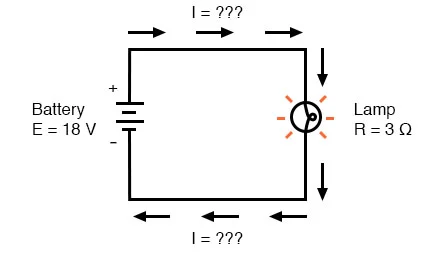4.6. Power#
The electric potential difference, or voltage \(V\), between two points is work done in moving a charge from one point to the other.
By definition the rate at which work is done is power, \(P\).
Using the definition of instantaneous voltage, and rearranging to solve for the change in work \(dw\):
The change in work, \(dw\) per unit time \(dt\) is therefore:
But remember, the definition of current is \(i=\frac{dq}{dt}\), thus Power can be written as:
For simpler DC-steady state circuits:
Units of Power#
Power is equal to voltage times current.
SI units for voltage \(V\) are \([\frac{J}{C}]\) and the SI units for current \(I\) are \([\frac{C}{s}]\).
Canceling the units coulombs, \(C\), power \(P\) ends up in units of \([\frac{J}{S}]\). One joule (\(J\)) per second (\(s\)) is equal to one watt (\(W\)).
Power, Current, Voltage and Resistance#
When current flows through a resistor, the absorbed electrical energy is dissipated as thermal energy.
The rate at which this occurs is referred to as power dissipation.
Using Ohm’s law, two alternate forms relating power to current, resistance, and voltage can be created using
Ohm’s law as \(V = IR\)
Ohm’s law as \(I=\frac{V}{R}\)
The image below shows how power, voltage, current and resistance can all be related.
 Image Credit: WireCharm, Creative Commons Attribution 3.0 License
Image Credit: WireCharm, Creative Commons Attribution 3.0 License
GIVEN:
The circuit diagram below:

Image Credit: Applied Industrial Electricity, Design Science License
In the above circuit, we know we have a battery voltage of 18 volts and a lamp resistance of 3 \(\Omega\).
FIND:
The electrical power disspated by the lap, \(P_l\)
SOLUTION:
In the above circuit, we know we have a battery voltage of 18 volts and a lamp resistance of 3 \(\Omega\). Using Ohm’s Law to determine current, we get:
Now that we know the current, we can take that value and multiply it by the voltage to determine power:
This tells us that the lamp is dissipating (releasing) 108 watts of power, most likely in the form of both light and heat.
